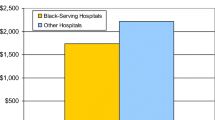Abstract
Objective: The study was designed to examine 3 years of a healthplan’s claims data (1997, 1998 and 1999) in order to accomplish an in-depth analysis on the costs and use of services and pharmaceuticals in the treatment of diabetes. It was also intended to benchmark those findings against similar data for a large national population of managed-care lives, in order to compare the healthplan’s performance with regional and national averages. A larger goal was to begin exploring the value of mining large benchmarking databases, such as this, to support healthplan activities.
Study design: Retrospective claims data analysis.
Methods: Encrypted claims data from Blue Cross and Blue Shield of Minnesota (BCBSM) were employed to identify and categorize episodes of diabetes using the Episode Treatment Group™ (ETG™) methodology from Symmetry Health Data Systems of Phoenix, Arizona. A clinical disease model developed by Phar-Metrics, Inc. of Watertown, Massachusetts, was then superimposed on the ETG™ group to allow the analysis to focus on patients with diabetes, stratified according to type 1 versus type 2 diabetes mellitus, and by the presence or absence of comorbid conditions and complications. These data were analyzed as follows along several parameters, including the type of product: health-maintenance organization (primary care coordinated) and preferred-provider organization (open access or fee-for-service); region of the state; and by the ten largest providers in the state. Three major pathways of analysis focused on (i) the cost of an episode of diabetes, (ii) utilization of recommended care services for members with diabetes, and (iii) the impact of different drug treatment cohorts on the costs of an episode of diabetes. In addition to the internal analysis of BCBSM data, a similar analysis was used on the large Integrated Outcomes Database (about 16 million covered lives at the time of this analysis) developed by PharMetrics, Inc., in order to benchmark BCBSM performance against that of the Midwest and the US in general. Although the study included both type 1 and type 2 diabetes mellitus patients, this report focuses primarily on the results noted for those with type 2 diabetes.
Results: Analysis of the data showed that costs (based on charges) for an episode of diabetes were higher in the Midwest than in the rest of the US. Costs within BCBSM were comparable to those of the Midwest. Results also showed that members of BCBSM received the (minimum) recommended care services for diabetes at a higher rate than the rest of the country. Finally, the study showed considerable variation in the cost of an episode of diabetes based on the drug or drugs used to treat the illness, but did not indicate that any individual drug or combination of drugs was superior from a cost-effectiveness perspective.
Conclusions: The methodology and focus on episodes of care appear to be a good way to examine complex illnesses to try to understand the impact of variation in resource utilization. The lack of specific outcomes data limits the interpretation of the results. Finally, the value of benchmarking healthplan data against large, national databases has yet to be established. This study was a first step in assessing the value of such analyses. It is my opinion that having access to such databases can enhance the value of healthplan studies and that this study represents only a very preliminary approach to understanding and harnessing the value of such a resource.







Similar content being viewed by others
Notes
PharMetrics, Inc. is a healthcare information services company headquartered in Watertown, Massachusetts, with analytic operations inMinneapolis and sales andmarketing inNew Jersey. Its Integrated Outcomes Database currently includes a longitudinal history ofmore than 18million lives of encrypted, linked medical and pharmaceutical claims edited for quality, consistency and completeness, grouped into episodes, and organized into a sophisticated analytic database.
Symmetry Health Data Systems, Inc., located in Phoenix, Arizona, provides patented Episode Treatment Grouping™ software to more than 300 managed-care organizations directly or through healthcare decision support vendors. Episode Treatment Groups, ETGs, and ETG are owned by Symmetry Health Data Systems, Inc., and are used under a grant of license. Episode Treatment Groups™ (ETG™) is protected under United States patent #5,835,897. US and foreign patents pending.
Information obtained from theMinnesota Department of Health website: http://www.health.state.mn.us/ (Data from the year 1999-2000.)
References
American Diabetes Association. Diabetes facts and figures [online]. Available from: URL: http://www.diabetes.org/ada/facts.asp [Accessed 2000 Dec]
Hodgson TA, Cohen AJ. Medical care expenditures for diabetes, its chronic complications, and its comorbidities. Prev Med 1999; 29(3): 173–86
Author information
Authors and Affiliations
Corresponding author
Rights and permissions
About this article
Cite this article
Eisenberg, S.S. Benchmarking in Understanding Resource Utilization and Disease Management — Are We Ready?. Dis-Manage-Health-Outcomes 9 (Suppl 1), 29–38 (2001). https://doi.org/10.2165/00115677-200109001-00005
Published:
Issue Date:
DOI: https://doi.org/10.2165/00115677-200109001-00005




